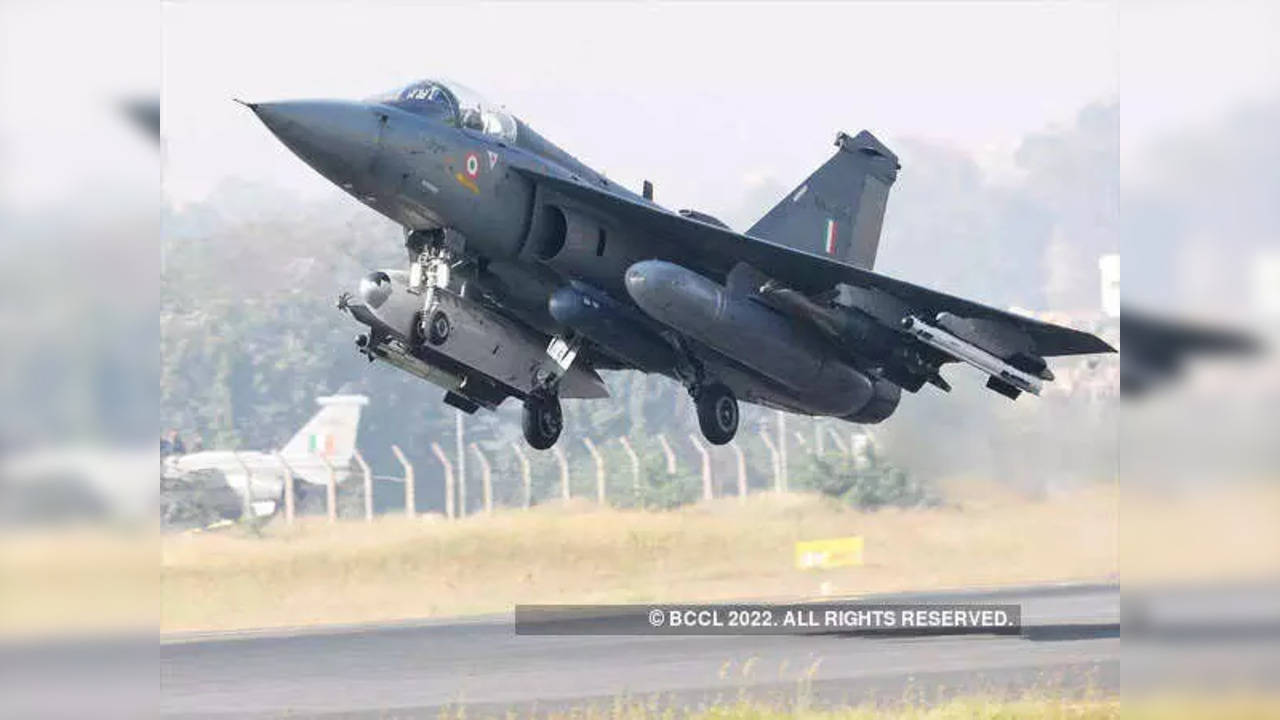Why India’s Tejas is emerging as top choice for Malaysia over Chinese, Russian, Turkish jets
After the superior daredevil and breathtaking performance of HAL’s LCA Tejas in the skies of Singapore at the Singapore Air Show earlier this year and closing a successful BrahMos deal with The Philippines, India is moving in for closing Malaysia deal with unprecedented confidence and a great product in its hands.

Hindustan Aeronautics Ltd.'s LCA Tejas (file).
Photo : BCCL
New Delhi: Made-in India Light Combat Aircraft (LCA) Tejas has emerged as the top choice for Malaysia, on the verge of beating the Chinese JF-17 jet, South Korean FA-50, Turkish Hurjet, and Russian Mig-35 and Yak-130, as per Hindustan Aeronautics Limited Chairman, R Madhavan, with PTI.
Apart from the LCA Tejas’ suitability for the Malaysian needs to replace the ageing Hawk 108 and Hawk 208, and the overall package deal for Su-30, there are many reasons why India’s pursuit for the expansion of defence exports, especially LCA Tejas is now vigorous more than ever.
LCA Tejas:
Tejas is India’s headliner light combat aircraft, an indigenous aircraft. Named by the then Prime Minister, Atal Bihari Vajpayee, ‘Tejas’, the supersonic jet was developed to replace India’s ageing Russian MiG fleet and expand India’s indigenous aerospace capabilities.
Tejas is a single-engine multi-role fighter jet, which is the lightest and smallest supersonic aircraft in its class. It is also equipped to carry air-to-air, air-to-surface, precision-guided, and standoff missiles and weaponry. Its satellite-assisted inertial navigation system makes it a fourth-generation fighter.
One of the most unique and remarkable features of Tejas is the Made-in-India, Active Electronically Scanned Array (AESA) radar. The AESA radar has the capability to track 50 targets in the sky at a range of more than 100 kilometres while simultaneously engaging four of them.
India has also started working on the MK 2 version of Tejas and an ambitious $5 billion project to develop a fifth-generation Advanced Medium Combat Aircraft (AMCA). This brings an amazing future for the Indian military aviation industry.
Experienced pilots have said that Tejas is the most pilot-friendly fighter jet. It has a superior avionics system to American F-14s, currently in use by the Pakistani Air Force.
There are four variants of Tejas so far – two-seater Tejas trainer, LCA Navy, LCA Navy Mk2, and Mk2 variants.
A deal Malaysia can’t deny:
Tejas is technically superior to JF-17 and FA 50 and it comes with a packaged deal for Malaysia. JF-17 is cheaper and hence it was inclining towards getting the deal however the absence of its technical superiority, it is inching towards LCA Tejas.
Tejas is lighter than JF-17 with a more powerful engine and more payload carrying capacity. HAL has also modified and ungraded Tejas to become more suitable for the Malaysian requirements.
Apart from this, as part of a packaged deal, India has also offered to set up an MRO (Maintenance, Repair and Overhaul) facility in Malaysia for its Russian Su-30 fleet. Why can’t it maintain the Russian fighter fleet on its own? Because it can't procure spares for the aircraft from Russia because of the western sanctions amid the Ukraine crisis.
The Turkish aircraft Hurjet was also in the race and made a lucrative offer to Malaysia, proposing a partner status to produce the fighter experimental TF-X and also offered to manufacture its utility helicopter, Gökbey.
However, since Hurjet is still in the pipeline and Tejas is already being used by the IAF, the deal, again tilted in India’s favour. Malaysia is also concerned about the procurement costs of Hurjet.
Global future of Tejas:
HAL chairman, Madhavan also said that the Malaysian will give a "very good signal" to other prospective buyers of the aircraft and boost its overall export potential. That’s why India sees this Malayasian deal as very important.
Last month, Economic Times reported that India has offered to set up an LCA and helicopter manufacturing facility in Egypt. It was indicative of the fact that India also intends to explore the export opportunities in the Middle East and North Africa, which currently operate largely mixed fleet from western countries.
It means that LCA Tejas might soon be seen in the fleets of these countries as well.
Trending:
End of Article
Subscribe to our daily Newsletter!
Related News





Interview with Dr. Debraj Shome on Shifting Perceptions in Cosmetic Surgery: Prioritizing Safety and Innovation

1937 Mercedes-Benz 540K: The Resurfacing of a Star from The Pranlal Bhogilal Collection!

Brothers Hacked In Front Of Eyes, Boy, 10, Shares Chilling Details Of UP Double Murder

Delhi Police Recovers Body Of ACP'S Missing Son From Haryana's canal

15-Year-Old Rape Survivor Hangs Herself After She Was Found Pregnant








